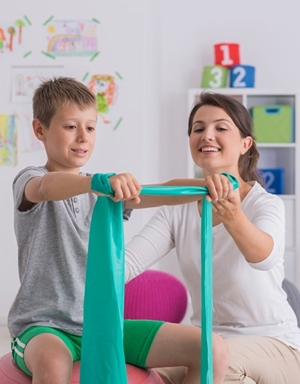What is Substance Exposure on the Internet and How to Protect Your Child
While the term “substance exposure” is most commonly used in the context of a woman using substances during pregnancy (and the effects this has on the baby), today we’ll focus on a different aspect: substance exposure on the internet.
In our day and age, substances are all over the internet, and your child will likely encounter them in one way or another – whether through news stories, social media, or even indirectly: through their friends who came across something online.
To reduce this exposure, you can take certain precautions. In this article, we’ll discuss what substance exposure on the internet is and how you can protect your child. Stay tuned for valuable insights!
What is substance exposure on the internet?
As we mentioned in the introduction, “substance exposure” is typically used in a different context, but it can also describe how young people learn about drugs—not just their consequences, but what certain drugs do and how they can obtain them. The internet is a vast pool of information, and with just a few clicks, anyone can learn anything – from how to cook pasta in the most effortless way to how to obtain illegal substances. This freedom of information can be a troublesome double-edged sword. Fortunately, there are steps parents can take to protect their children from early exposure to drugs online, steps that could help prevent risky behaviors later in life.
How big of a deal is substance exposure?
In other words, should we be worried? First, let’s examine whether there has been any research on the relationship between substance exposure on the internet and consumption, and if so, what the data reveals.
While there still aren’t papers that examine the relationship most directly, one study published in Health Affairs concluded that the rise of illegal online pharmacies has made it a lot easier for young people to obtain prescription drugs without actually having them prescribed. Additionally, the researchers believe that the increase in internet use may be linked to higher rates of prescription drug abuse in the US. Although the study has some limitations, it highlights the need for better monitoring.
Even Forbes has covered it: the internet is overflowing with recipes and DIY guides; a clever teen can easily find step-by-step instructions on everything from growing marijuana to getting high off common household items.
The role of pop culture and media
It’s not just recipes and consumption guides we need to worry about; pop culture – through popular music, movies, and TV shows – also plays a significant role in exposing young people to various substances. Think about how many popular songs today glorify some kind of substance use.

The influence of pop culture’s most successful export – music – isn’t to be taken lightly.
How to protect your child from substance exposure on the internet?
Let’s take a closer look at what you can do to prevent your children from being exposed to substances on the internet at an early age.
Stay up to date (be informed)
Knowing where to find the right information and staying up to date on how children can be exposed to substances online is key to better prevention. It’s always best to learn from trustworthy sources that offer expert insights. Resources like Little Creek Recovery offer expert advice on recognizing early warning signs and creating an open dialogue with your child about the risks of substance use. Prevention is always better than the cure and staying informed will help you gain a decent advantage necessary for keeping your children safe and sound.
Set up digital safeguards (SafeSearch)
You can enhance your child’s online safety by familiarizing yourself with the privacy and security settings on their devices. Begin by learning how to activate SafeSearch on search engines to filter out inappropriate content. Utilize parental controls to block unsuitable apps and restrict access to specific websites. If you need further guidance, don’t hesitate to seek help from IT experts, consult trusted online resources, or contact your device’s customer support.
Monitor your kids’ online activities (eyes wide open)
While some might find this as an intrusion of privacy, monitoring your kids’ online activities is a key part of keeping them safe in the digital world. Placing the family computer in a shared space makes it easier to spot what websites they’re visiting. Also, regularly checking the browser history can give you insights into their online habits, and if you notice any deleted history, it might be time for a chat.
Once they have their own phone, consider installing a parental monitoring app. These apps can track internet activities and even alert you if your child tries to access risky content or uses concerning phrases like “sneaking out” or “don’t tell anyone.”
Limit screen time (being a little strict won’t hurt)
You’re probably already doing this, but if not, you should start. Limiting your kids’ screen time is important to encourage them to spend time offline, enjoy activities with friends, and play outside, just like you did when you were young. Of course, each generation has its own way of having fun, and cutting your kids off the internet entirely isn’t really the answer. However, a bit of limitation can be very beneficial. It’s not about being overly strict or conservative; many professionals agree that managing screen time is crucial for your children’s optimal growth.
Talk to your kids about substances (in an age-appropriate manner)
You can’t discuss substance abuse with your six-year-old the same way you would with a twelve-year-old, and even a twelve-year-old may not fully grasp the topic. However, it’s important to find an age-appropriate way to talk to your children about substances. Encourage open communication and stress that substances, whether legal or illegal, are not a solution to life’s challenges. If your children are old enough, sharing your own experiences in a straightforward, non-alarming manner can help them understand better.
Conclusion
Keeping your children safe from substance exposure on the internet or elsewhere is a crucial part of parenting. While it might feel like you’re going to become a cyber detective or overly watchful, implementing these practices will help ensure your kids are protected from harmful content they’re not ready to engage with, protected from a world they should never become a part of.









